School Education
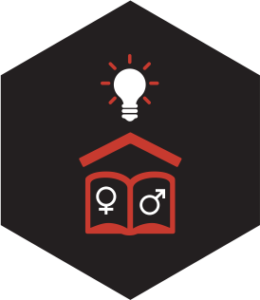 The changing number of people in different age groups affects how many students there are and how much money is needed for schools. In Odisha, population projection shows that there would be fewer kids (6-14 years old) but more young people (20 and above), so we need to carefully plan while opening new schools and invest more in higher education. We need to do this quickly to get the most benefits from our changing population.
The changing number of people in different age groups affects how many students there are and how much money is needed for schools. In Odisha, population projection shows that there would be fewer kids (6-14 years old) but more young people (20 and above), so we need to carefully plan while opening new schools and invest more in higher education. We need to do this quickly to get the most benefits from our changing population.
Status of Education in Odisha
Over time, education in Odisha has improved. In the last four decades, Odisha’s literacy rate has come close to the national average. In 2011, it was 72.87%, just slightly lower than the national average of 72.99%. According to the latest National Family Health Survey-5 (2019-21), 78.8% of Odisha’s population is literate. Among different age groups, the literacy rate is over 98% for 7-14 years old but drops to 66.3% for people aged 30 and over.
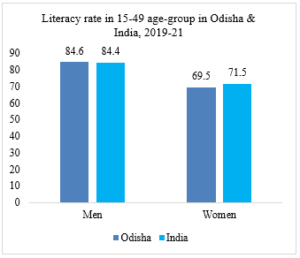 The ‘National Education Policy (NEP) 2020’ suggests adding pre-primary education to formal education, aiming for quality early childhood development for all students entering Grade 1 by 2030. Currently, 57 out of 100 children aged 2-4 attend pre-primary education in Odisha, which is higher than the national average of 40%. The NEP (2020) emphasizes improving access to pre-primary education.
The ‘National Education Policy (NEP) 2020’ suggests adding pre-primary education to formal education, aiming for quality early childhood development for all students entering Grade 1 by 2030. Currently, 57 out of 100 children aged 2-4 attend pre-primary education in Odisha, which is higher than the national average of 40%. The NEP (2020) emphasizes improving access to pre-primary education.
In India, school enrollment has increased, with many states, including Odisha, having over 90% Gross Enrolment Ratio (GER) at the elementary level (95.4% in Odisha) (UDISE+, 2021-22). However, there is a decline in enrollment ratios at higher levels, with the GER at higher secondary level (16-17 years) being 43.6% in Odisha. Compared to neighboring states, girls’ access to school education is comparatively better in Odisha. Within Odisha, the access to school education is relatively better in the coastal districts.
While the enrollment of girls in schools is satisfactory, the dropout rate remains high. A significant number of girls leave school to attend to household responsibilities, such as caring for siblings and cooking. Raising awareness about the importance of education alone may not suffice to address this issue. Additional efforts are required to challenge gender stereotypes at the family level. Education institutes should also focus on developing innovative curricula aimed at breaking these stereotypes and fostering a more inclusive learning environment.
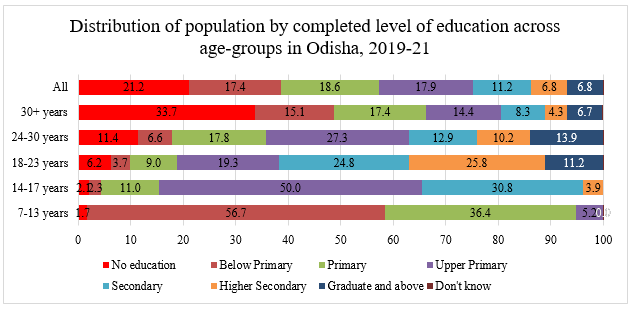 When kids start going to school, it is important to think about how they move from one grade to the next. In Odisha, 97.5% of students transition from primary to upper primary, slightly higher than the national average of 93.2%, with very little difference between boys and girls. However, this transition rate decreases as students move from elementary to secondary and secondary to higher secondary. Notably, girls (52.4%) have a higher transition rate than boys (47.6%) in Odisha. This suggests that if we support girls’ education early on (in elementary school), they are more likely to finish higher secondary school.
When kids start going to school, it is important to think about how they move from one grade to the next. In Odisha, 97.5% of students transition from primary to upper primary, slightly higher than the national average of 93.2%, with very little difference between boys and girls. However, this transition rate decreases as students move from elementary to secondary and secondary to higher secondary. Notably, girls (52.4%) have a higher transition rate than boys (47.6%) in Odisha. This suggests that if we support girls’ education early on (in elementary school), they are more likely to finish higher secondary school.
Children stop going to school for various reasons. The main one is ‘repeated failures/not interested in studies,’ reported by children aged 6-17 years. This leads to around 34.8% of children in Odisha being out of school. Some children need to work to help their families financially or take care of their families when parents are at work, with 13% of children doing so overall. Notably, about 7% of girls cite marriage as the reason for being out of school.
It is a documented fact that there is a learning crisis globally. While more kids go to school now, the actual learning levels have not improved much. In rural India, almost 60% of grade V students in government or private schools cannot read a grade II level text in 2022, up from 50% in 2018 (Annual Status of Education Report- ASER, 2022). In Odisha, only 43% of grade III students are proficient or advanced in language (National Achievement Survey, 2021). As education levels rise, there is a significant drop in the number of students proficient in language and math.
Implications of Demographic Change in Planning of School Education
The relationship between demographic changes and education is interconnected. Since the introduction of the Right of the Child to Free and Compulsory Education Act (2009), more schools now follow the recommended distance criteria between households and schools, leading to increased school access. However, some schools struggle to attract enough students, with many in Odisha having less than 50 enrollments. The decline in the child population, coupled with out-migration and more schools, has resulted in the creation of “small schools.” In Odisha, the share of the child population is expected to decrease from 7.3% in 2021 to 6.3% in 2036 (Ministry of Health and Family Welfare). In the current scenario, the number of elementary schools per thousand children aged 5-14 years will increase from 6.9 in 2021 to 8.0 in 2036.
The National Education Policy (2020) suggests combining small schools or shutting them down to make education better and more cost-effective. However, it is important to think about the local population and geography. In tribal areas, there are fewer people in small settlements and remote areas. So, it is natural that only a few students would go to these schools. If we do not think about the impact of combining schools or do not come up with other plans based on the local population and geography, the whole effort would not be helpful and might even cause problems.
Discussion Points
In education, three important things are ‘quantity’, ‘quality’, and ‘equity’. The National Education Policy (2020) envisions that by 2040, India will have a top-notch education system with fair access to high-quality education for everyone, regardless of their background. Considering the changes in Odisha’s population and the education vision, we need to think about a few things:
- How will the population changes in Odisha affect the number of kids eligible for school, considering different social, economic, and geographic factors?
- How can Odisha follow the National Education Policy’s recommendation about merging small schools without making it hard for students to get to school?
- What are the opportunities and challenges in adding ‘pre-primary education’ to formal school structures, and how can Odisha make sure everyone has access to it?
- After the pandemic, what strategies helped recover learning loss, and where does Odisha need to improve?
- How can Odisha make sure that the access to education at the elementary level extends to secondary and higher secondary levels?
- How can community and civil society organizations make sure the education system is accountable for providing ‘quality education’?
- What are the innovations and best practices that are available for replication?
Speakers / Paneslists :
Shri Anil Pradhan, Convenor, Odisha RTE Forum
Shri Biswajit Kar
 Dr. Biswajit Kar is currently serving as an Assistant Professor in Azim Premji University, Bhopal. Prior to joining Azim Premji University, he worked at the National Institute of Urban Affairs (NIUA) and UNICEF, Delhi. At NIUA, he worked on multiple research projects and was the Managing Editor of Urban India, a journal published by NIUA. At UNICEF, he supported the designing and implementation of a Management Information System (MIS) for the Madrassas and other research works. Dr. Kar earned his M. Phil. and Ph.D. from JNU, conducting research studies on multiple issues such as segregation, privatization, inequality in opportunity and access, and neighbourhood schooling in the context of school education in India. He has experienced application of geographic concepts and techniques in understanding educational development in the disadvantaged areas. His technical expertise lies in designing and managing large-scale primary surveys using Open Data Kit (ODK) platform. He has also experienced data management and analysis, both primary and secondary datasets, namely NFHS, NSS, UDISE+, Census of India and IHDS, etc. using statistical packages (SPSS, STATA, and R Programming) and GIS software.
Dr. Biswajit Kar is currently serving as an Assistant Professor in Azim Premji University, Bhopal. Prior to joining Azim Premji University, he worked at the National Institute of Urban Affairs (NIUA) and UNICEF, Delhi. At NIUA, he worked on multiple research projects and was the Managing Editor of Urban India, a journal published by NIUA. At UNICEF, he supported the designing and implementation of a Management Information System (MIS) for the Madrassas and other research works. Dr. Kar earned his M. Phil. and Ph.D. from JNU, conducting research studies on multiple issues such as segregation, privatization, inequality in opportunity and access, and neighbourhood schooling in the context of school education in India. He has experienced application of geographic concepts and techniques in understanding educational development in the disadvantaged areas. His technical expertise lies in designing and managing large-scale primary surveys using Open Data Kit (ODK) platform. He has also experienced data management and analysis, both primary and secondary datasets, namely NFHS, NSS, UDISE+, Census of India and IHDS, etc. using statistical packages (SPSS, STATA, and R Programming) and GIS software.
Shri Sudhanshu Kumar Patra, Deputy Director, Secondary Education, Odisha
Dr. Mohit Mohan Mohanty
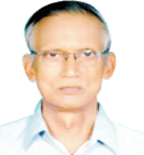 Dr. Mohit Mohan Mohanty is the Former Director Of The State Institute Of Educational Management And Training (SIEMAT), Odisha. He has also been a visiting Professor of Education in Ravenshaw University, Cuttack and External Faculty for teaching scholars in Pre- Ph.D. Course, Utkal University. He has also served in the government as the Additional Director, Directorate Of TE& SCERT. His areas of specialization include Educational Measurement, Quantitative and Qualitative Techniques, Mathematics Education, Elementary and Teacher Education.
Dr. Mohit Mohan Mohanty is the Former Director Of The State Institute Of Educational Management And Training (SIEMAT), Odisha. He has also been a visiting Professor of Education in Ravenshaw University, Cuttack and External Faculty for teaching scholars in Pre- Ph.D. Course, Utkal University. He has also served in the government as the Additional Director, Directorate Of TE& SCERT. His areas of specialization include Educational Measurement, Quantitative and Qualitative Techniques, Mathematics Education, Elementary and Teacher Education.
Prof. Laxmidhar Behera
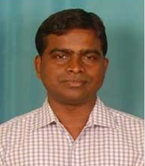 Prof. Laxmidhar Behera, a renowned educationist at RIE, Bhubaneswar, brings expertise in childhood education, teacher training, and educational assessment. With a vast academic journey, including a PhD in Education, he has dedicated decades to teaching and research. Prof. Behera’s impact extends nationally, serving on the National Focus Group for Literacy, Numeracy, and as Member Secretary for the National Curriculum Framework. His involvement in research committees at Utkal University and others highlights his commitment to educational advancement. Beyond academia, Prof. Behera is an Editorial Board Member at the Journal of Education, NCERT, and an academic reviewer for esteemed journals. His multifaceted contributions underscore Prof. Laxmidhar Behera as a key figure shaping the landscape of education.
Prof. Laxmidhar Behera, a renowned educationist at RIE, Bhubaneswar, brings expertise in childhood education, teacher training, and educational assessment. With a vast academic journey, including a PhD in Education, he has dedicated decades to teaching and research. Prof. Behera’s impact extends nationally, serving on the National Focus Group for Literacy, Numeracy, and as Member Secretary for the National Curriculum Framework. His involvement in research committees at Utkal University and others highlights his commitment to educational advancement. Beyond academia, Prof. Behera is an Editorial Board Member at the Journal of Education, NCERT, and an academic reviewer for esteemed journals. His multifaceted contributions underscore Prof. Laxmidhar Behera as a key figure shaping the landscape of education.
Dr. Amina Charania
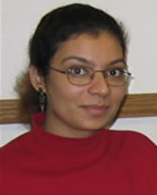 Dr. Amina Charania is presently an Associate Professor in Education in TISS, Mumbai. She had her doctoral degree from Iowa State University in Education. She initiated and led the initiative called Integrated approach to Technology in Education (ITE), at Tata Trusts. ITE offers a pedagogic framework for authentic and connected learning which is integrated with the curriculum. ITE currently caters to over 30 thousand students from socially marginalized pockets in India. She also leads the Teacher Professional Development cell of the Connected Learning Initiative at TISS, which is a joint project with MIT. Over the years, she has gathered first-hand experience from the rural middle and secondary schools. This has guided her research work in the area of integrating ICT for enabling constructivist approaches in teaching and learning, and models of continuous professional development for government school teachers. In addition, her experience of working with multiple platforms across government run schools, community learning centers, and madrasas, has culminated into multiple research interests. Currently she is also researching on teaching strategies and TPD using Digital Badges in COVID Lockdown Period.
Dr. Amina Charania is presently an Associate Professor in Education in TISS, Mumbai. She had her doctoral degree from Iowa State University in Education. She initiated and led the initiative called Integrated approach to Technology in Education (ITE), at Tata Trusts. ITE offers a pedagogic framework for authentic and connected learning which is integrated with the curriculum. ITE currently caters to over 30 thousand students from socially marginalized pockets in India. She also leads the Teacher Professional Development cell of the Connected Learning Initiative at TISS, which is a joint project with MIT. Over the years, she has gathered first-hand experience from the rural middle and secondary schools. This has guided her research work in the area of integrating ICT for enabling constructivist approaches in teaching and learning, and models of continuous professional development for government school teachers. In addition, her experience of working with multiple platforms across government run schools, community learning centers, and madrasas, has culminated into multiple research interests. Currently she is also researching on teaching strategies and TPD using Digital Badges in COVID Lockdown Period.
Ms. Rukmini Panda
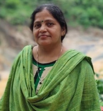 Ms. Rukmini Panda is the State Head, Breakthrough India and an recognized leader working as Program Officer – Gender Justice with specialization in Research & Development, Program Management, Liaising & Coordination and Team Management. She bring along a solid record of achievements in Development Domains with 22 years of experiences. She has served as an external member of Internal complain Committee under Sexual Harassment; Prevention, Prohibition and Redressal Act, 2013 for different departments for government and Board of Studies, Sociology Department, G.M. University, Odisha.
Ms. Rukmini Panda is the State Head, Breakthrough India and an recognized leader working as Program Officer – Gender Justice with specialization in Research & Development, Program Management, Liaising & Coordination and Team Management. She bring along a solid record of achievements in Development Domains with 22 years of experiences. She has served as an external member of Internal complain Committee under Sexual Harassment; Prevention, Prohibition and Redressal Act, 2013 for different departments for government and Board of Studies, Sociology Department, G.M. University, Odisha.

